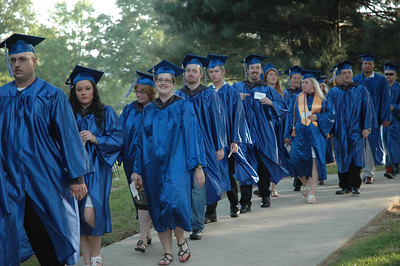I’ve been looking at community colleges whose enrollment has risen this fall. Nationally, community college enrollment has declined by nearly 10%. Several of the institutions I’ve looked at so far have developed free tuition plans to entice students back to the classrooms. Dabney S. Lancaster Community College, in Clifton Forge, VA didn’t take that approach.
Located about 50 miles north of Roanoke, DSLCC’s total enrollment is less than 600 students. As a small community college, DSLCC can’t afford to lose a lot of students. When the pandemic forced all of its classes online, DSLCC staff made the effort to contact all students every two weeks by phone. The phone calls gave the college an opportunity to assess how its students were doing during this crisis, and to determine whether they needed extra support.
The personal connection approach has paid off. Summer enrollment increased by 22%, and fall enrollment is up by 6%. DSLCC President John Rainone didn’t wait to let students know that the college intended to offer most of its classes online in the fall, with a hybrid option in place for occupational education programs. In addition, DSLCC added a number of shortened-semester classes to its schedule.
Raising community college enrollment requires effort
Knowing what DSLCC was going to do enabled its students to make plans for the summer and fall semesters. In other words, the students didn’t have to wait until DSLCC made its plans public to evaluate their own options. It also allowed DSLCC to enroll students who might have attended a four-year institution under other circumstances.
Simply talking to its students regularly, making rapid decisions about how the college would handle the fall semester, and making adjustments to its fall calendar increased enrollment. DSLCC had planned for a 5% budget cut and a flat enrollment, but neither of those scenarios played out. The college also reports that it has several open positions it needs to fill, but cannot, due to a statewide hiring freeze.
Like the Community College of Baltimore County, the DSLCC administration took rapid action to combat a potential loss of enrollment. For both institutions, immediate action worked. And in both cases, the results were better than expected or hoped.
If it is possible to increase enrollment during a national crisis, it is also possible to increase enrollment in more ordinary circumstances. There is no need to waste time and money on revenue-generation schemes that are irrelevant to WCC’s mission.
But raising enrollment involves work, strategy, commitment, and leadership. It also involves an unwillingness on the part of the Board of Trustees to accept handwringing and excuses from highly compensated administrators that cannot seem to produce results in either good times or bad ones.
Photo Credit: Dabney S. Lancaster Community College , via Flickr




















